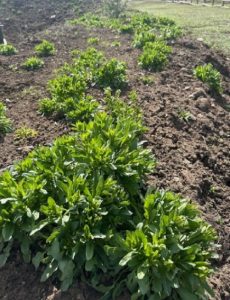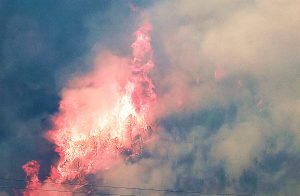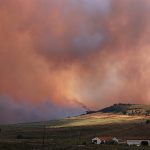CAA: Routt County Toolkit to help landowners with soil health and drought resiliency
Routt County Conservation District
Soil Conservation Districts were established in response to the Dust Bowl of the 1930s to provide conservation planning and practices for local private landowners.
As Northwest Colorado faces another drought, it is even more important to remember that soil health is crucial for weathering the drought. Routt County Conservation District supports this and other conservation needs of local landowners with assistance from the Natural Resources Conservation Service.
The signs of healthy soil include being alive with beneficial micro-organisms and having underground animal and plant activity, such as earthworms and fungi. Soil that is porous, rich in organic matter, dark in color, and crumbles off the roots of the plants you pull out.
Unhealthy soil lacks the moisture and nutrients needed to thrive. It crumbles and cracks in your hands. Compacted soil is also a sign of unhealthy soil.
Routt County Conservation District has developed a toolkit for landowners in Routt County to improve soil health and boost resilience against drought and wildfire. This toolkit is based on the five principles of soil health from Saving Tomorrow’s Agricultural Resources (STAR).
These include minimizing soil disturbance, which helps reduce moisture loss and erosion. Maintaining a soil cover or protective layer helps control soil temperature and moisture, supporting soil microbes. Plant diversity increases biological activity and promotes a healthier soil ecosystem.
Having a continuous live plant or root system sustains soil microbial life and boosts soil organic matter. Additionally, integrating livestock, either grazing or browsing, stimulates and enhances soil biological processes.
Since most of Routt County is now a rangeland ecosystem, dry-land grain farming stopped in the eighties, so soil health principles should be applied within that context.
For example, the cover crops used in grain production act as soil armor, but in our systems, cover crops are used to add diversity and help break up compaction. Our soil armor should be leaving four-inch hay stubble or 50% of plant material in the grazing pastures.
Beyond the toolkit, the Routt County Conservation District is working with local ranchers on the virtual fence project. In this project, the ranches will be using the Vence virtual fence system to control the grazing of the cattle.
The hope is to see, in the long term, improvement in soil health of the summer grazing pastures using the virtual fence system and a grazing plan. The conservation district also has a 200-gallon weed sprayer for rent, to help local landowners with weed control, which is critical to the local soil health.
To learn more about the conservation district, visit our website at Routtcountycd.com. There, you can access local resources, soil health principles, download the toolkit, learn about the virtual fence project, or rent the weed sprayer.
The website also features the conservation district’s long-term plan, which is created through our annual landowners and working group meetings. This plan helps the local NRCS office prioritize conservation efforts. If you have a natural resource concern, please plan to attend next year’s landowners and working group meeting.
Patrick Stanko, Routt County Conservation District Board President.

Support Local Journalism

Support Local Journalism
Readers around Steamboat and Routt County make the Steamboat Pilot & Today’s work possible. Your financial contribution supports our efforts to deliver quality, locally relevant journalism.
Now more than ever, your support is critical to help us keep our community informed about the evolving coronavirus pandemic and the impact it is having locally. Every contribution, however large or small, will make a difference.
Each donation will be used exclusively for the development and creation of increased news coverage.









